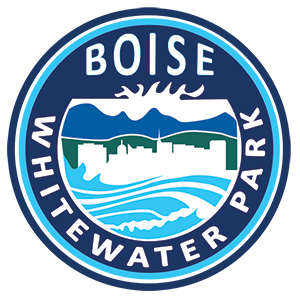The Start
The Boise Whitewater Park is part of the Boise River Recreation and Management Plan that was developed by a team of citizens; representatives of local, state and federal natural resource agencies; and a private consulting firm beginning in 1996. The plan was adopted by the Boise City Parks & Recreation Commission and Boise City Council in December 1999, the plan considered public safety, recreation use, river access, water quality, river bank stabilization, the river riparian zone and other natural and man made features and uses such as irrigation.
Sites chosen for the Boise Whitewater Park were based on criteria outlined in the River Management Plan. Specific consideration was given to the existing irrigation diversions and the safety hazards they presented the public; improvements that could be made to the existing river riparian zone; fish habitat improvements; and recreation access.
In 2003, Recreation Engineering and Planning Inc. of Boulder, Colorado, was hired to analyze several sites on the Boise River and provide recommendations about the development of a park consistent with the objectives of the Boise River Management Plan. The consultants produced a Site Evaluation and Design Report. In the Site Evaluation and Design Report, Recreation Engineering and Planning recommends the ideal location for the Boise Whitewater Park is between Main Street and Veteran’s Memorial Parkway adjacent to the site of the new Esther Simplot Park.
Friends of the Park
A team of community volunteers known as Friends of the Park began working with Boise Parks & Recreation to raise funds for and to build the Boise Whitewater Park in 2006. The goal was to transform the river into a more natural riparian setting, improve fish habitat, stimulate economic development and provide a convenient location for water sports enthusiasts near downtown.
The first phase of the park, rebuilding the Thurman Mill Dam, was initiated in June of 2010 when the Thurman Mill Irrigation District signed an historic agreement with the Friends of the Park and the City to allow for the work to proceed. The new Thurman Mill Diversion (now the Harry W. Morrison Dam) is complete, with Wave Shaper technology and shoreline amenities.
For more information on this and future phases of the park, click here.
History & Impact
This section of the river was channelized in the early to mid 1900s and the riparian zone and river bed is marginal for wildlife and fish habitat. Further, the river was not user friendly for recreational access and use. These habitat and safety situations were improved through the development of the Boise Whitewater Park.
Some have questioned the impact the Park will have on Bald Eagles and fish. Since Bald Eagles roost along the Boise River during the winter, the impact to the eagles from the Boise River Park and Esther Simplot Park will be minimal. In fact, the impact will likely be positive. Since the Boise River and Esther Simplot Parks will receive minimal human use during the winter months and both the Boise River and Esther Simplot Park vastly improved fish and wildlife habitat, the eagles will likely have an increased food source.
Osprey fish in Quinn's Pond nearby throughout the year and Bald Eagles fish in the pond during the winter months and the pond is directly adjacent to Esther Simplot Park and the Boise Whitewater Park.
Concern has been expressed regarding the number of spectators and users that might congregate along the parks and the Greenbelt. City staff has spoken with representatives from several other communities that have developed river parks and inquired about spectators. Representatives of other communities with river recreation parks say that spectators often out number water users and can create concerns if the facility is not properly designed.
Today, everyone involved is working to to the facilities that mitigate user and spectator conflicts and impacts.
Image courtesy of Art of Visuals as modified by North End Creative.
A fun project update from 2011 by Grant Amaral visiting Idaho River Sports to get a look at the Centennial High School wave model and working scale model of the wave shaper itself.

